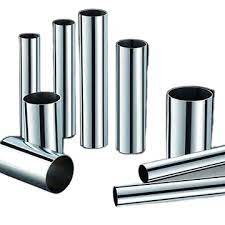Stainless Steel 309 Pipes have become increasingly popular in the market today, and for good reason. These pipes are known for their excellent mechanical properties, resistance to high temperatures, and value as piping solutions for the petrochemical and chemical industries. As a buyer of Stainless Steel 309 Pipes, it is essential to know everything about these products, to effectively make informed decisions. In this blog, we will take a comprehensive look at Stainless Steel 309 Pipes to help you understand what they are, the benefits they offer, and how to choose the right one for your needs.
What is Stainless Steel 309 Pipe?
Stainless Steel 309 is a high-alloy austenitic stainless steel that is designed to work in conditions requiring resistance to high temperatures. Stainless Steel 309 Pipe is made using this material, making the pipes capable of withstanding temperatures up to 1900°F, a property that is ideal for high-temperature applications such as furnace components, boilers, burners, and heat exchangers. The excellent combination of high chromium and nickel content ensures Stainless Steel 309 Pipe's resistance to oxidation, reducing sulfur-bearing gases, and other corrosive elements.
Benefits of Stainless Steel 309 Pipe
One of the most significant advantages of Stainless Steel 309 Pipe is its ability to withstand high temperatures. In addition, this stainless steel has excellent mechanical and thermal properties, making it an ideal material for high-temperature applications. Stainless Steel 309 Pipe is also highly resistant to corrosion, making it suitable for use in environments with high levels of corrosive chemicals. Furthermore, Stainless Steel 309 Pipe can be fabricated easily, making it a cost-effective solution for piping needs.
How to Choose the Right Stainless Steel 309 Pipe
When choosing Stainless Steel 309 Pipe, it is important to consider the intended application. The following factors are essential when picking a Stainless Steel 309 Pipe:
Temperature Rating: Choose a pipe with a temperature rating that matches the intended application. The temperature rating usually ranges from 1900°F to 2100°F.
Size: Pick the right size to avoid installation problems, and ensure the pipe can handle the intended flow.
Type of End Connection: Different applications require different end connections, such as threaded, butt-welded, or flanged. Pick the right end connections to ensure compatibility with other components in the system.
Wall Thickness: Select the wall thickness of the pipe based on the operating pressure in the system.
Material Grade: Stainless Steel 309 comes in different grades. Pick the right grade based on the specific application.
Maintenance of Stainless Steel 309 Pipes
Proper maintenance is essential to keep Stainless Steel 309 Pipes in top working condition. Regular cleaning with mild detergent and water will protect the pipe against rust and other corrosive elements. Stainless Steel 309 Pipe is also susceptible to sensitization, a condition that causes the pipes to corrode when exposed to high temperatures. To avoid sensitization, Stainless Steel 309 Pipes should be annealed, where they are heated and cooled to reduce their carbon content.
Conclusion:
Stainless Steel 309 Pipes are excellent piping solutions for high-temperature applications, offering excellent mechanical and thermal properties, as well as resistance to corrosion. Understanding what the pipes are, their benefits, and how to choose the right one based on application and maintenance is essential. As a buyer, use the insights in this blog to choose the right Stainless Steel 309 Pipe for your piping needs.






